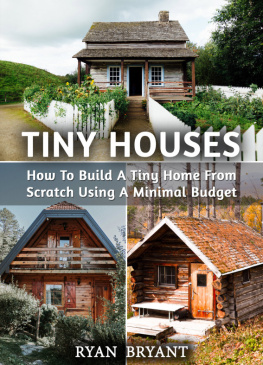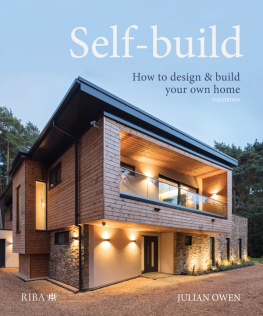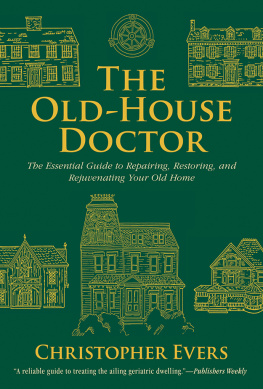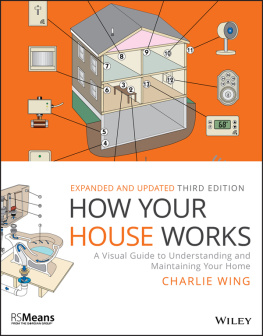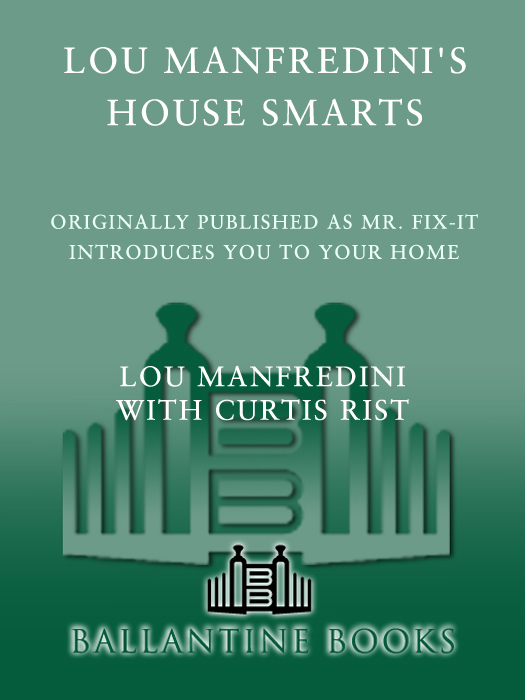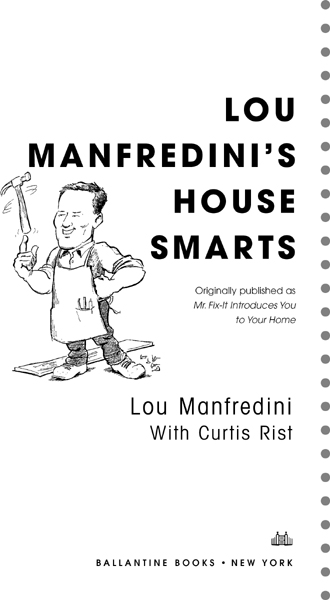contents
Its not how a house looks that matters, says Mr. Fix-It, its how a house feels. Spend your repair and renovation dollars with this in mind, and youll end up with a solid home that appreciates in valueand is far more comfortable to live in.

A home is more like a living, breathing organism than a pile of lumber and concrete; heres an anatomy lesson.

Cant make sense of that tangle of plumbing? Follow Mr. Fix-It as he traces every drop, from water main to sewer line.

The average home contains some two miles of wiringMr. Fix-It can untangle every inch.

Heres how to keep your home cool when its hot, and warm when its not.

Windows and doors bring in the light while keeping out the wind and rain; heres how to manage them.

As the most heavily used surface in a house, floors deserve some special attention.

Its not whats on the walls, its whats in them that will add the most to your home.
Basements can be scary placesunless you know how to tame them.

Like a shingled umbrella, a roof protects your home from the elements; heres how it worksand what youll need to know to maintain it.

More than just a place to cook, the kitchen has become the focal point of the household.

Want an inviting bathroom? First take care of mold, mildew, leaks, and foul air.

What you need to know about setting up roomsfrom dcor and lighting to closets that work.

Its the little thingsfrom paint to woodworkthat bring out the best in a home.

Your home should be connected to the land that surrounds it; heres how to devise a plan.

Mr. Fix-It takes you on a tour of your home and helps you make a list of what to tackle first.
Stress, anyone? Heres how to handle contractors, finances, and the chaos of home improvement.
A small collection of easy-to-use tools is all youll need to master the basics of home repair.
To manage whats going on with your home, it helps to speak the language of maintenance and renovation.
Not sure where to turn to find out more about your home?
Let Mr. Fix-It lead the way.
introduction
S earching for our dream home a few years ago, my wife, Mary Beth, and I knew only vaguely what we wanteduntil we walked up to a slightly tired-looking brick Georgian. The place was far from trendy; in fact, it had been built back when FDR was president. There was no hot tub in the backyard, no family recycling center, and no skylights. It had the original kitchen, the original furniture, and even the original ownera kind lady who had lived there since 1941. Yet as we stepped inside on that wintry day, I closed the two-inch-thick front door behind us and heard a sturdy thunk, like an old Mercedes. This is the house, I instantly whispered to my wife. What are you talking about? We havent even been through it, she responded. But I persisted: Im telling you, this is the house!
And I was right. With Mary Beths enthusiastic approval, we bought the placemetal kitchen cabinets and allthe next day.
Lots of people, especially real estate agents, think they can divine exactly what a house should be in order to appeal to people. They might come up with an ideal square footage, promote a certain bedroom-to-bathroom ratio, and go on and on about the value of a deck versus a patio. I think thats mostly nonsense. Because when it comes down to it, the only thing thats truly important in a house is the way it feelsa place that feels solid, not tinny; a home that keeps you cool in the summer and toasty warm in the winter; a house that will stand up for the ages, rather than fall apart before the decades out. Whether youre renovating a home, building an addition, or simply maintaining what youve got, I believe its a lot better to let yourself be guided by that principle rather than try to add a few haphazard things that might attract some future buyers.
More than anything, I want you to think of your house as a place to treasure and care for, not patch together. We all allow ourselves on occasion to do slipshod things to our cars, for instance, whether we skip the occasional oil change, hold off on the scheduled maintenance, or even pocket the insurance money instead of repairing that bashed-in fender. Unfortunately, too many people take the same approach to a house. Yet while a car will eventually end up on the scrap heap, a well-maintained house will only grow in value. This investment goes far deeper than simply owning a few shares of some dot-com or blue-chip stock. Its an investment in ourselves and our quality of life. As the very symbol of family life, a house demands respect from the people that live in it.
That sense of respect is what I hope you can develop by reading this book. As youll discover, this is not a typical how-to volume, with tips on how to fix a broken bathroom tile, regrout a kitchen backsplash, or patch a leaky roof. There are probably plenty of those already on your bookshelfand if youre like most homeowners who try to wade through them, you probably find yourself lost in a bewildering vocabulary of floor joists, wall studs, R-values for insulation, and the secret coding of blueprints. Its as if these books were written in another language. Instead, this is a book that will help you begin to understand a house in its entirety, in a language you can follow. While you may not find the exact details youll need for every project you want to undertake, youll walk away with something far more important: an intuitive understanding of your home that will empower you to make the right decisions for its future as well as for your own.






